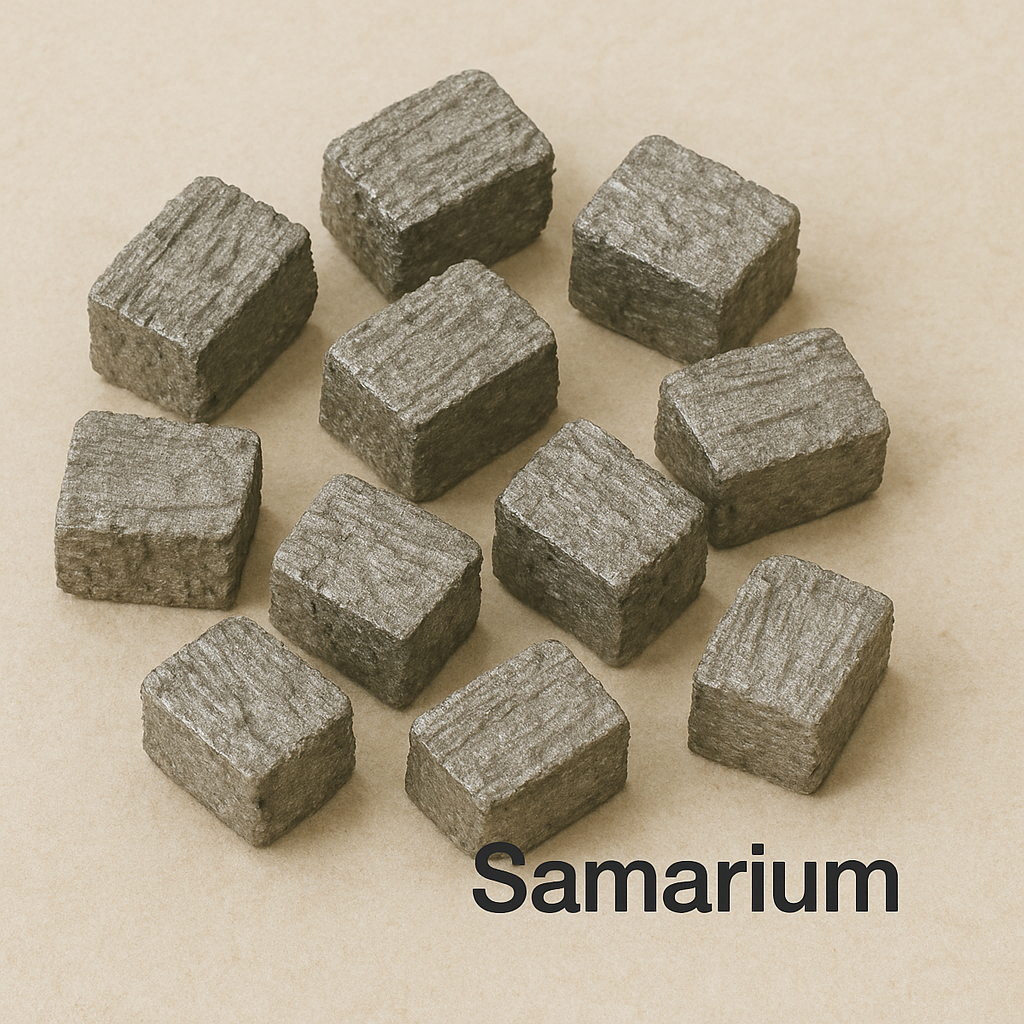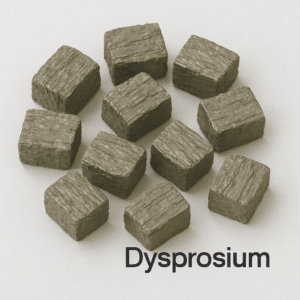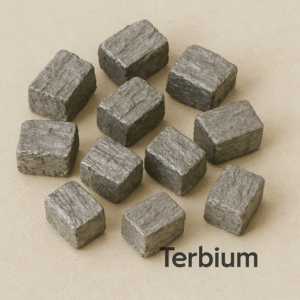Your cart is currently empty!
Samarium (Sm)
Basic Information Element Name: Samarium Symbol: Sm Atomic Number: 62 Atomic Weight: 150.36 Element Category: Lanthanide (Rare Earth Element) Standard State: Solid Appearance: Silvery-white, moderately hard metal Chemical and Physical Properties Density: 7.52 g/cm³ Melting Point: 1,072 °C (1,962 °F) Boiling Point: 1,794 °C (3,261 °F) Electronegativity (Pauling scale): 1.17 Common Oxidation States: +2, +3 (dominant) Magnetism: Paramagnetic Reactivity: […]
Description
Basic Information
-
Element Name: Samarium
-
Symbol: Sm
-
Atomic Number: 62
-
Atomic Weight: 150.36
-
Element Category: Lanthanide (Rare Earth Element)
-
Standard State: Solid
-
Appearance: Silvery-white, moderately hard metal
Chemical and Physical Properties
-
Density: 7.52 g/cm³
-
Melting Point: 1,072 °C (1,962 °F)
-
Boiling Point: 1,794 °C (3,261 °F)
-
Electronegativity (Pauling scale): 1.17
-
Common Oxidation States: +2, +3 (dominant)
-
Magnetism: Paramagnetic
-
Reactivity: Reacts slowly in air, more rapidly with water and acids
Storage and Stability
Samarium tarnishes in air and should be stored in an inert atmosphere or under mineral oil. Although less reactive than europium, it can still ignite if powdered and heated. Samarium(III) oxide (Sm₂O₃) is the most stable compound and widely used.
Occurrence and Extraction
Samarium is found in rare earth minerals such as monazite and bastnäsite, usually alongside other lanthanides. It is separated by solvent extraction, ion-exchange, or electrolytic reduction from rare earth chlorides.
Isotopes
-
Natural samarium consists of seven isotopes, with Sm-152 and Sm-154 being the most abundant
-
Sm-149 has an exceptionally high neutron absorption cross-section, making it important for nuclear reactor applications
Key Applications
1. Permanent Magnets (SmCo Magnets)
-
Samarium–cobalt (SmCo₅ or Sm₂Co₁₇) magnets are second only to NdFeB in strength, but superior in thermal stability and corrosion resistance
-
Used in:
-
Aerospace actuators
-
Precision motors
-
Military-grade equipment
-
Electric guitar pickups and audio systems
-
Oil drilling tools (high temperature environments)
-
2. Nuclear Reactor Neutron Absorber
-
Sm-149 is a potent neutron absorber used in control rods and shielding for nuclear reactors
-
Helps regulate reactor activity and protects sensitive components
3. Catalysts and Chemical Reagents
-
Samarium compounds (e.g., samarium iodide SmI₂) are used as selective reducing agents in organic synthesis
-
Common in fine chemicals, pharmaceuticals, and research chemistry
4. Lasers and Infrared Applications
-
Sm³⁺ ions are used in laser materials, infrared-absorbing glasses, and high-temperature ceramics
5. Lighting and Display Technology
-
Samarium phosphors are used in carbon arc lighting for movie projectors and studio lighting
-
Also used in X-ray and infrared optical filters
Strategic and Industrial Relevance
-
Samarium is a strategic rare earth due to its role in high-performance magnets and nuclear control systems
-
With rising demand for EVs, defense tech, and clean energy systems, the need for SmCo magnets is growing
-
Global production is concentrated in China; supply chain diversification is a growing focus
Interesting Facts
-
Discovered in 1879 by French chemist Paul Émile Lecoq de Boisbaudran
-
Named after the mineral samarskite, which itself honored Russian mining official Vasili Samarsky-Bykhovets
-
SmCo magnets operate in temperatures exceeding 300°C — ideal where NdFeB magnets fail
-
A unique blend of magnetism, nuclear stability, and catalytic versatility
Additional information
| Weight | 1 lbs |
|---|---|
| Dimensions | 1 × 1 × 1 in |
| Weight | 100G |
-
Cerium (Ce)
$257.00 -
Dysprosium (Dy)
$670.00 -
Erbium (Er)
$174.00 -
Europium (Eu)
$1,550.00 -
Gadolinium (Gd)
$106.00






